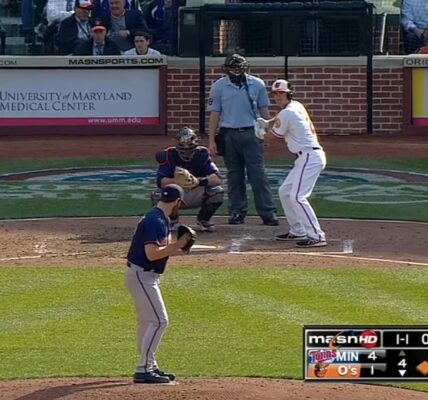In the intricate world of baseball, where victory and defeat often hang in the balance, the concept of ties has its own unique narrative. This article explores the historical roots, regulations, and debates surrounding tied games in baseball.
Historical Context of Baseball Ties
Baseball’s journey has seen games conclude in ties, a phenomenon rooted in the sport’s early days. Before the introduction of stadium lights, contests continued until darkness prevailed, resulting in occasional ties. With the advent of lights, teams gained extended playing time, altering the landscape of tied outcomes.
MLB’s Approach to Tie Games
Unlike many sports, baseball traditionally plays until a winner emerges. However, weather disruptions have occasionally led to tied games. If a match is deadlocked after five innings and faces postponement due to weather conditions, MLB protocols dictate its resumption either the next day or when the teams meet next.
The last recorded tie occurred in 2016 between the Pirates and Cubs, emphasizing how weather-induced pauses can impact the game’s flow. MLB has a historical precedent of dealing with tie games, often resuming them the next day or at a later date.
Explore how rain delays impact the flow and dynamics of a baseball match.
Handling Ties in Extra Innings
Extra innings add a layer of excitement to baseball. If a game remains tied after nine innings, the teams continue until one secures victory by the end of an inning. The potential for double-digit extra innings exists, with the longest recorded game dating back to 1920—a 26-inning duel ending in a 1-1 tie due to darkness.
Playoffs: No Room for Ties
In the postseason, ties find no place. Games persist until a clear winner emerges. With the ubiquity of stadium lights, darkness ceases to be a factor, but weather-induced delays can still occur. However, postponed playoff games are resumed later, ensuring a decisive outcome.
Debating Ties in MLB
The question of whether MLB games should end in ties sparks debates. While some argue ties could spare pitchers’ arms and shorten game times, others believe it contradicts baseball’s essence. Baseball fans cherish the thrill of a conclusive outcome, and implementing ties might deviate from this tradition.
Delve into the strategic moves unveiled during a game, drawing a line in baseball.
Emerging Trends: Addressing Game Length
As baseball adapts to the modern era, there is a growing emphasis on addressing the length of games. To keep the audience engaged and streamline the viewing experience, MLB has been experimenting with various rule changes. These changes aim to reduce the duration of extra-inning games without compromising the integrity of the sport.
One notable adjustment introduced is the placement of a runner on second base at the start of each extra inning. This alteration injects an element of immediacy, increasing the likelihood of scoring and expediting the game’s resolution.
While purists may view this as a departure from tradition, proponents argue that it adds excitement and mitigates the risk of excessively prolonged contests.
Discover other rules of baseball in this video
Fan Perspectives on Tie Games
Understanding the pulse of baseball fans is crucial when exploring the dynamics of tied games. Fan sentiments vary, with some embracing the traditional notion of games played to a conclusive end, while others express openness to innovations that could potentially enhance the overall experience.
Social media platforms serve as a sounding board for fan reactions. The divide between those who relish the thrill of extra innings and those who prefer a more concise game becomes apparent. The ongoing dialogue between fans, players, and league officials shapes the narrative around ties in baseball.
International Variances in Handling Ties
Baseball’s reach extends far beyond U.S. borders, with international leagues encountering diverse challenges, including unique approaches to tied games. For instance, in Japanese baseball, ties are accepted outcomes, reflecting a distinct cultural perspective on sportsmanship and competition.
Exploring these global variations provides insight into the adaptable nature of the sport on a broader scale.
The Impact of Technology on Umpire Decisions
Advancements in technology have significantly influenced how ties are handled in baseball. Umpires now have access to sophisticated weather prediction systems, ensuring more accurate decisions regarding game delays and potential ties.
The integration of instant replay reviews also contributes to fair and precise outcomes, reducing the margin for error in critical situations.
The Economics of Tied Games
The economic implications of tied games in baseball are multifaceted. While a conclusive result often translates to increased fan engagement and merchandise sales, ties can disrupt revenue streams tied to extended play durations. Sponsors, broadcasters, and advertisers navigate the delicate balance between the unpredictability of ties and the financial stability of a decisive outcome.
Conclusion
Baseball, with its unresolved games, unfolds as a captivating narrative where history meets modernity. Questions surrounding extra innings, global perspectives, and technological shifts paint each tied game as a unique episode in the sport’s story.
Beyond the statistics and rule changes, tied games encapsulate the essence of baseball—an ever-adapting game rooted in tradition. The excitement of unforeseen outcomes and the shared anticipation among fans contribute to the enduring charm of tied games.




